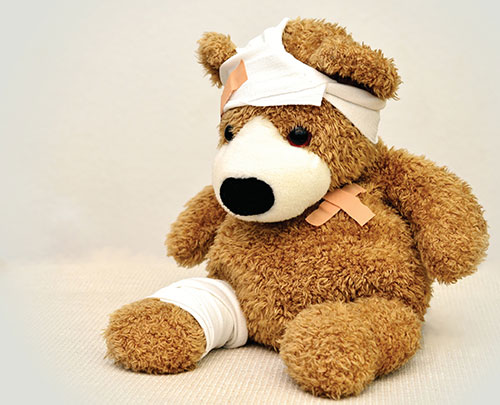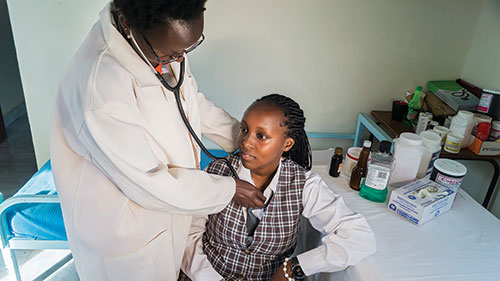Managing Pain
 When your child is experiencing pain, you will do everything possible to find out what's causing the pain and help. Your efforts usually start with taking your child to his or her primary care physician for a medical evaluation.
When your child is experiencing pain, you will do everything possible to find out what's causing the pain and help. Your efforts usually start with taking your child to his or her primary care physician for a medical evaluation.
Your child's physician first needs to evaluate and treat the medical concerns. However, there may be times when a behavioral health expert can assist you in treating your child's pain.
The strategies a behavioral health provider can recommend will be specific to your child and your circumstances. Here are three sets of those strategies; parenting strategies to help your child manage pain, teaching your child how to monitor and manage pain and strategies for working with your child's school.
Helping Your Child Manage Pain
-
Follow your physician's recommendations on recovery periods from illnesses and invasive medical procedures. Ensure that your child is able to resume normal activities before he or she returns to a typical routine.
-
Monitor your child to make sure he or she takes the medication that is prescribed by a physician (both prescription and over-the-counter medicine).
-
Praise your child when he or she behaves well and fulfills daily responsibilities, even when he or she still might be experiencing some pain.
-
If your child misses school or extracurricular activities because of pain, have him or her rest for the entire day, with no access to electronics, friends or activities.
-
When your child tells you he or she is experiencing pain, remain calm and briefly discuss what he or she is feeling. Then take appropriate action rather than repeatedly checking on your child about the pain.
-
Focus on healthy habits, such as ensuring your child gets plenty of sleep and is eating a healthy diet.
-
Look into treatment interventions like biofeedback and neurofeedback.
 Strategies for Your Child to Manage Pain
Strategies for Your Child to Manage Pain
-
Complete a daily pain log to track activities and pain levels over time. Use a 1-10 pain scale (with 1 being little or no pain and 10 being unbearable pain) to assess how you are feeling at certain times of the day or during certain activities.
-
Increase your awareness of stress, what causes it and how to properly manage it.
-
Stick to typical daily routines and responsibilities, even if it means taking an occasional break. For example, if your pain intensifies at school and makes it difficult to remain in class, rest in the nurse's office for 10 minutes and then return to class.
-
Identify what is important to you and what motivates you to persevere even when you don't feel well. Stay focused on these values.
-
Develop a positive “can do" attitude about the pain, so that it doesn't keep you from doing what is important to you.
-
Develop strategies for physically calming your body, such as relaxation and meditation exercises. Use online videos or apps to learn these strategies, and practice them every day so you can use them when you need them.
-
Practice how to effectively describe your condition and how it affects you, and how to advocate for yourself.
Strategies to Address Pain at School
-
Explain your child's condition to and share your concerns about his or her health with relevant school staff.
-
Provide school staff with the recovery plan prescribed by your child's physician.
-
Provide the school nurse with any medication your child needs to take during the school day.
-
Require your child to promptly complete assignments and homework he or she misses because of school absences.
-
Develop a 504 Accommodation Plan with school staff. This plan allows your child to have accommodations in place at school to ensure his or her medical concerns don't negatively affect their academic progress. You may need to provide documentation from his or her primary care physician about your child's medical condition.
Download Printable Version
Kid Tips;Common Behavioral Concerns
